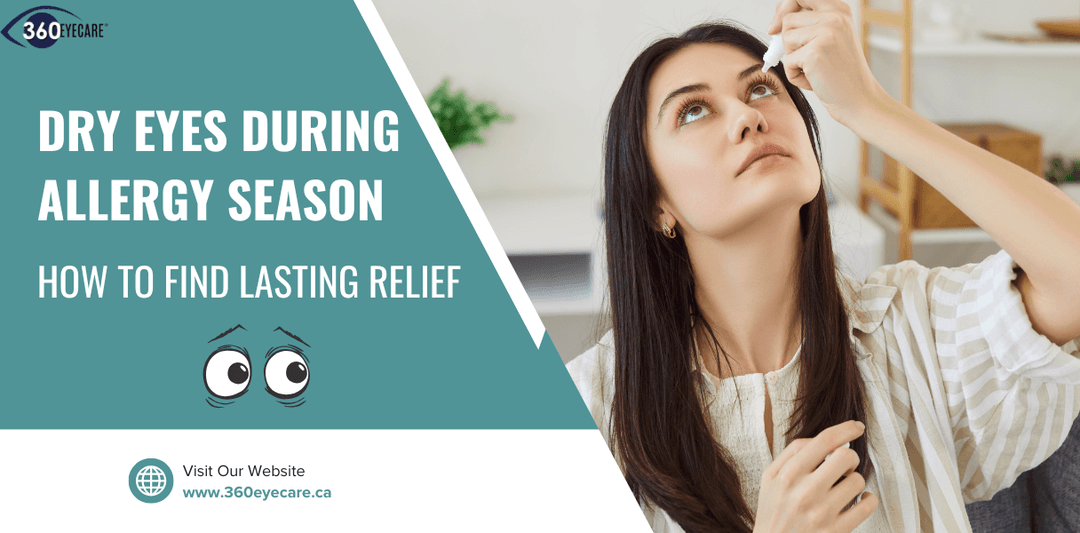With the kickoff to summer underway, our days are now filled with sunshine and warmth. Flowers have bloomed, and trees are bright and filled with leaves. Summer is fun and visually appealing, but summer also has a fair number of us reaching for seasonal allergy medication and over-the-counter eye drops.
For most, it starts in the spring, when pollen counts are usually at their highest, and we begin to feel the telltale signs of itchy discomfort and watery eyes. Summer will be filled with occasional flare-ups of irritation, depending on the weather and the number of plants we find ourselves surrounded by.
Did you know there is a difference between the dry eye caused by seasonal allergies and chronic dry eye syndrome? How can you tell if you are suffering from one or the other? What can you do to find relief from either?
What Is The Difference Between Seasonal Allergies And Dry Eye Syndrome?

Many of the most common and obvious symptoms of seasonal allergies and dry eye syndrome overlap and resemble each other. While both are characterized by eye discomfort and excessive tearing, Dry Eye Syndrome, or DES, has less of the itchy feeling and more of a gritty irritation, as if something like sand was in the eye. The key difference is this feeling of itchiness.
When most airborne allergens and foreign bodies (pollen, mold spores, and dust, for example) come into contact with the cells that make up our bodies, the body produces a natural compound called histamine to try and push the allergen out of the body.
Histamine is what causes an inflammatory response in the body, and this response is what causes us to feel “itchy” and have a compulsion to scratch or rub. Our eyes become more watery than usual, and our noses become runny as the excess tears try to drain away naturally. We feel an urge to rub our eyes to alleviate some of that discomfort, which makes the eyes tear more and become red from the irritation.
For allergy sufferers, taking an antihistamine will calm a lot of the symptoms and provide temporary relief. For those with DES, however, antihistamine medication might actually make their symptoms worse, not better.
How Do You Find Out What Kind Of Dry Eye You Have?

The answer is a proper eye exam and medical diagnosis.
Finding the root cause of your dry eye symptoms is the most important component to creating an effective treatment plan.
Seasonal irritation is one thing, but when dryness lingers beyond allergy season, it could signal something deeper. For a closer look at the common causes and treatments behind chronic dryness, explore our piece on dry eye syndrome to understand how it develops and how it can be managed effectively.
If you’re searching for an eye doctor near you, your optometrist can determine the cause of your dry eye symptoms and offer treatment options ranging from simple environmental adjustments to specialized lubricating eye drops and comprehensive dry eye care regimens.
With most of the summer still to come, if you still find yourself dealing with persistent eye discomfort that does not seem to be going away, it might be time to schedule an eye exam for a more thorough look.
To learn more about Dry Eye Syndrome, see our post about it here.
To see one of our Optometrists about the dry eye symptoms you might be having, please reach out to any of our locations to book your eye exam: 360 Eyecare – Yorkville or 360 Eyecare – Beaches.
Share this article:

